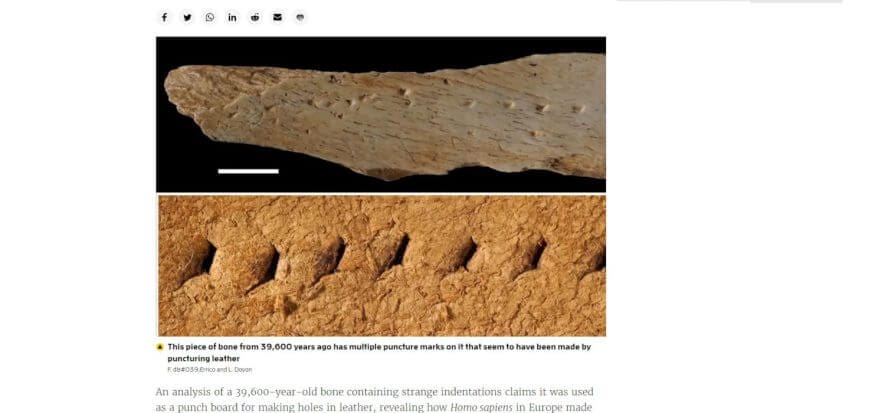A horse or bison bone dating 39,600 years ago. It was utilized a holed platform to make holes on leather worn as clothes. This discovery was made by the University of Bordeaux and made possible by a study conducted by Turin-born archeologist Francesco d’Errico and published by Science Advances.
The discovery
The bone comes from a large mammal, presumably a horse or a bison, discovered in Terrasses de la Riera dels Canyars, a fluvial site near Barcelona. This bone has 28 marks on its surface, as if it was sowed with leather in a linear sequence of 10 equidistant holes distanced about 5 millimeters. Their shape indicates that the pre-historic artisan produced 10 equidistant holes with the same tool. Morphology, orientation and positioning of holes, exclude the possibility that it was decorative or used to keep track of numbers. The remains found by the Spanish site and their carbon dating show that the technique of the holes was used by Homo Sapiens on the Eastern coast of Spain 39,600 years ago. This study of the French university show that this was done 14,000 years before the introduction of needles in Europe, hunters and gatherers were already able to create leather clothing.
The value of the date
Leather, it seems, has always existed and has always had a central role in the lives of people, starting with our ancestors, as they used the byproduct of meat to make clothing, blankets and shoes: a perfect example of circularity that today (some people) seems to be difficult to understand. The finding of iron and copper items have allowed us to understand the evolution of men throughout the centuries. While it’s complex to recover leather because, while resistant, it’s a biological material that biodegrades in time. This discovery allows us to date with more certainty the use of hides from animals that today is comprised between 45,000 and 35,000 years ago. The date attached to the discovery of the early bone needles in Siberia and western China.
Read also:










